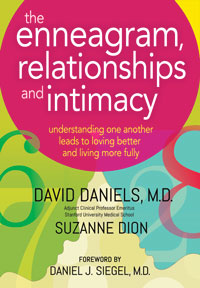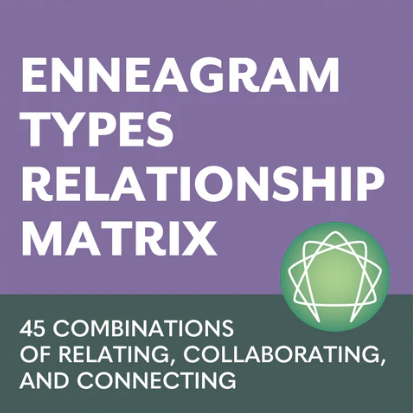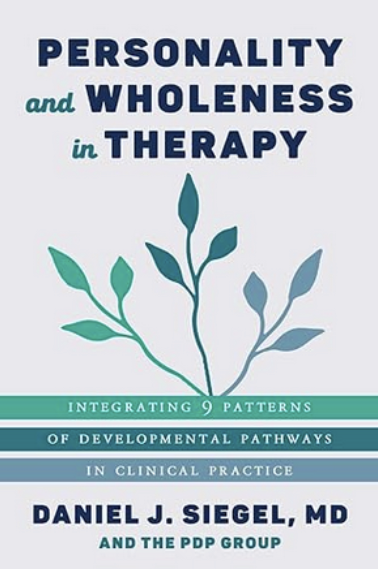How I Came to the Enneagram and my Passion for Relationships
For some time in my clinical practice I had been exploring and taking note of what seemed to be repeating human patterns — habits of mind — on my own and in my own way. I realized how some of us couldn’t get out of the critical mind, how some experienced fear, doubt, and worst-case thinking like myself, how some couldn’t get out of their feelings and some couldn’t get into them, how some just focused on other’s needs, while others seemed oblivious to the needs of others, and on and on. I realized that in relationships, contrasting beliefs about the way the relationship should be resulted in tremendous stress and conflict. I worked along quite well studying these differing styles and beliefs with pretty good results. Then with little warning, I “encountered” something incredible.
In the Fall of 1984, I attended “an Enneagram class” (I didn’t even know what the word meant) led by a bright and intuitive woman named Helen Palmer. “Why don’t you stop by one of my Enneagram classes…” she mentioned as I was leaving her office.
From then on and for the next 18 months, I became a devoted “closet” Enneagram student. Having come from such an academic environment, I experienced difficulty espousing this psychological-spiritual system of “nine types” that had its roots in ancient spiritual traditions. The Enneagram, however, became so compelling for me. With its power to elucidate what’s at the core of our beliefs and motivations combined with its profound way of understanding the adaptive strategies (that supported these fundamental beliefs and motivations), coupled with its potential for integrating our personal psychology with our higher, essential spiritual qualities finally pushed me “out of the closet” in 1986. I was convinced I had to share this profound system with the world!
It was a no-brainer. I brought the Enneagram into my private practice. I found it profoundly useful especially in my work with couples and those in relationships of all kinds. This body of wisdom about the nine structures brought about truly remarkable results and clients started clamoring for it. I went from being a toddler in the sandbox of note-taking discovery to a fully developed practitioner, using the system with great success and teaching others to teach it. What a gift this was! I could see the results time and time again. How effective I was, IT was, at making a huge difference in people’s lives, was remarkable.
By the Fall of 1988 Helen Palmer, now an Enneagram pioneer and author, and I launched the first Enneagram Professional Training Program (EPTP). We felt strongly that the world needed an established program that could teach others about this powerful system, and further its dissemination. We hoped to develop a powerful training that would embody quality, deepen understanding, and embrace high-ethical standards. Our program follows Helen’s original inclination to teach this material by facilitating others to speak directly about their own internal experience, a method we now call “The Narrative Tradition.” The material is demonstrated through panels of speakers, actual individuals of each type, speaking openly about their personal discoveries in front of a larger group. Witnessing the nine types so immediately, personally, has been one of the most indisputably powerful teaching mechanisms imaginable.
The Enneagram’s acceptance (despite my early-on, now-overcome Type 6 concerns) clearly manifested itself in 1994 when we held the first International Enneagram Conference at Stanford University, sponsored by the Department of Psychiatry and Professor Michael Ray of the Stanford Graduate School of Business. More than 1200 attended. What’s more, our school is growing internationally with programs in countries from Western Europe to the Czech Republic, China, Thailand, Africa, and Brazil. This doesn’t even begin to encompass the many thousands that have attended workshops offered by our programs, our graduates, and our students.
Also during this 22-year span, Harper/SF published my best-selling book, The Essential Enneagram. I recently updated and revised it in 2009. This book provides the most validated and reliable user-friendly paragraph that includes a process for self-discovery. It’s comprehensive and contains the most extensive practices for personal development ever written.
As Author Ginger Lapid-Bogda writes:
“David’s second edition of “The Essential Enneagram” is a true gem, as he takes his insights about the Enneagram and his ability to integrate the best theory and most useful practices to a new level. Everything’s in here: the three Centers of Intelligence, Enneagram subtypes, highly refined information on the 9 types, and type-specific psychological and spiritual practices. The first edition is excellent; this one has brilliance.”
I’ve also collaborated in developing the Narrative Tradition website, www.enneagramworldwide.com, the DVD, “Nine Paths to a Productive and Fulfilling Life” and “The Enneagram in the Workplace” that has sold over 1100 copies; and numerous workshops ranging from “The Enneagram’s Gift to Life and Love” to “Intimate Relationships: The Power of Presence, Spirit, and Eros,” and “The Enneagram’s Gift to Mastering Conflict Constructively and Compassionately.”
As I’ve discovered, studied, and now teach, the Enneagram is fundamental to how we are structured and function as human beings, and literally, is part of our evolution. We find the nine types exemplified in human beings across the planet regardless of culture, level of education, race, religion, or nationality. I feel strongly that the Enneagram and its capacity to be taught and shared provides a profoundly powerful path of hope for the future, for all of us, for world peace even.






